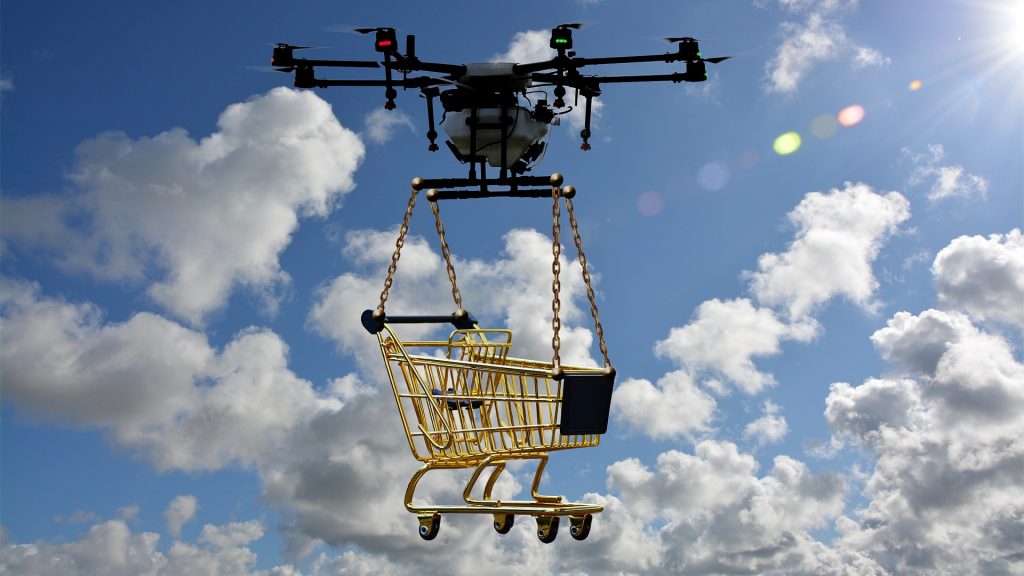Ordering Packages Via Drone Delivery Will Be An Option Far Sooner Than You Think
The drone delivery industry will be worth $4.4 billion by 2025, with most of this growth happening in the Asia-Pacific region.
This article is more than 2 years old

The phrase “look up in the sky, it’s a bird, it’s a plane” originated from the iconic Superman radio show from the 1930s. Superman was famous for his extraordinary abilities, including flight, immense strength, and invincibility. However, due to the prevalence of aerial technology, drone delivery has become a reality, and you might now witness a drone delivering your Amazon package instead of spotting mythical superheroes in the sky.
A recent article from CNET highlights a new drone from Zipline, a drone delivery company based out of San Francisco, which could bring aerial delivery closer for millions more people. Until recently, the Zipline drone has primarily been used to deliver blood supplies and vaccines to hard-to-reach locations in Rwanda and Ghana; however, the company now has operations in Utah, Arkansas, and North Carolina.
“We’re adding technology to our system that prepares us to reach billions of more people around the world,” Okeoma Moronu, Zipline’s leader of aviation regulatory affairs, said in a statement. “Our next generation platform will enable us to operate with the precision needed to fly safely into more complex environments and over more highly populated areas.”
The drone can travel up to 80 miles per hour and carry up to 4 pounds of cargo, delivering packages to customers in rural or remote areas, where traditional delivery methods are often slower and more expensive. It can also make deliveries in rugged terrain like mountains or over water.
The Potential of Drone Delivery
While Zipline was among the first to deploy drone technology, Amazon, Google, and UPS are also making strides in the drone delivery industry. According to Forbes, all three businesses have gained FAA authorization as air carriers under 14 CFR 135, allowing them to expand their autonomous air delivery systems.
This authorization allows these companies to distribute to various regions more quickly and efficiently. Amazon is just the third corporation to earn this accreditation, representing an incredible industry accomplishment.
The benefits of drone delivery are evident, including drastically reducing delivery times, particularly in difficult-to-reach places, reducing traffic congestion and greenhouse gas emissions, and potentially saving businesses money on labor and gasoline costs.
The Obstacles to Widespread Drone Delivery
One of the most significant hurdles to widespread drone delivery has been regulation. But the Federal Aviation Administration (FAA) has recently made things easier for businesses to use drones, allowing companies to use drones on a large scale.
However, there are still other obstacles to contend with, namely the question of safety. Drones often crash into other things, and a crash or loss of control could have serious consequences. In addition, the use of drones has also raised privacy concerns. To alleviate these legitimate fears, aviation authorities must implement specific rules and safety standards to guarantee safe drone delivery.
Another area for improvement is that drones have limited payload capacity, which determines the size and weight of products that may be delivered. Thus, drone delivery may only be appropriate for some products, and corporations may not find it cost-effective to employ drones for small or low-value items.
Despite these issues, drone delivery will no doubt be a popular option for many in the immediate future. Numerous firms are investing in developing drone delivery systems, and the technology is rapidly improving. According to research by the World Economic Forum, the drone delivery industry will be worth $4.4 billion by 2025, with most of this growth happening in the Asia-Pacific region.
So, the next time you squint toward the sky to discern if that flying object coming your way is a bird, a plane, or Superman, it just may be that new lemon peeler you ordered from Amazon.




